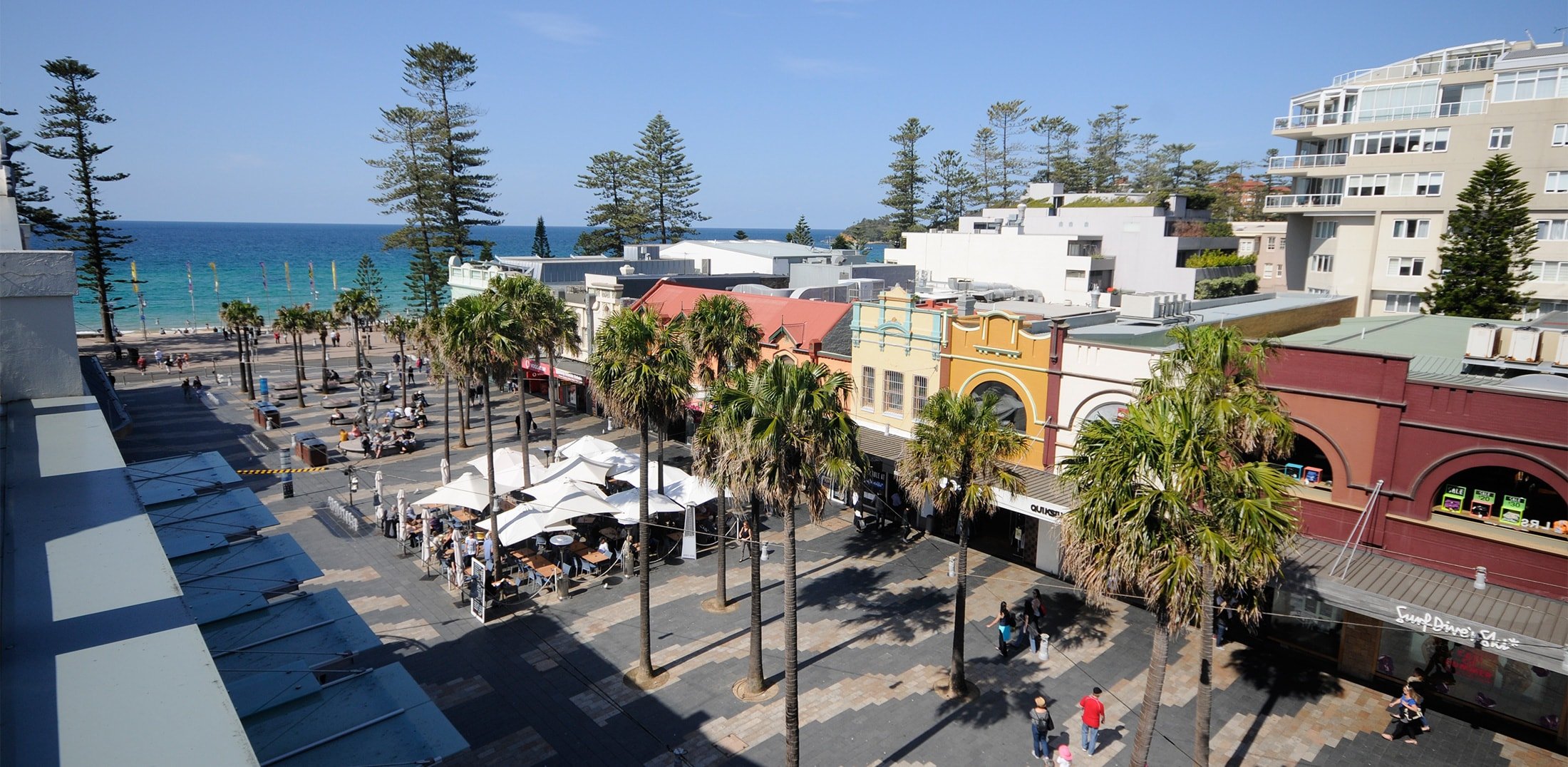Strategies for Main Street Retailers to Survive and Thrive
While shopping centres continuously innovate and expand their offering to draw in customers, local retail strips have struggled to keep pace. This lag has led to declining revenues for many independent retailers and high vacancy rates on main streets across Australia. The persistent threat of international competitors and the surge in online shopping further compound these challenges, casting doubt on the future viability and growth of our beloved main streets.
However, despite these challenges, retail main streets will continue to play an important role in servicing the local communities in which they operate. Whether it’s supporting local, great customer service or simply convenience; consumers still recognise the vital role that independent and main street retail plays within their lives.
The retail main street isn’t dead, rather it’s currently going through an evolution to stay relevant to consumers and remain competitive. In this post, we’ll explore several actionable strategies to help empower main street retailers to thrive in these challenging times.
USE PERSONALISED SERVICE AS YOUR DIFFERENTIATOR
Personalised service is a cornerstone of retail main streets, offering a unique advantage over larger competitors and shopping centres. By tailoring their interactions to meet individual customer needs, businesses can foster deeper connections and build loyalty.
Personalised service creates a memorable shopping experience. This not only encourages repeat business but also generates positive word-of-mouth, which is crucial for small businesses that rely heavily on community support.
In an era where online shopping and large retail chains dominate, the human touch can be a significant differentiator. By understanding and anticipating customer preferences, small businesses can offer curated recommendations and bespoke solutions that their larger competitors often cannot.
Think beyond the transaction to creating a meaningful 1-on-1 human relationship with customers.
2. FIND AND KNOW YOUR NICHE
The key for main street retailers competing with larger big-boxes and shopping centres is changing the narrative. Take what is perceived as your weakness (your smaller size) and make it a strength. Focus on your target audience in a very specific way that bigger players can’t or aren’t willing to do. Be responsive to your customer, nimble, more service oriented and focus on smaller subsets of the market.
Thrive on being different. You should let consumers looking for low-cost, huge selections, or other benefits provided by larger retailers shop elsewhere. There is no reason to pursue consumers who do not value your business the way you can run it.
3. DON’T FORGET YOUR BRAND
Investing time and resources into branding isn’t just something for those retailers with large marketing teams. Having a consistent look and feel can help you differentiate your business from the competition and attract the right customers.
It’s important for small businesses to analyse competitor sites and industry trends, but not to get too caught up in the competition. Instead, focus on how you can differentiate and provide your local audience with what they want. Listen to and encourage feedback from customers on how you can improve their overall customer experience. The spirit of small business is your immediate ability to make changes, pivot when needed, and iterate your way to success quicker than the big players.
Build a brand that appeals to your target audience and consistently delivers a high quality of products and services. The goal is to build a loyal following, and we believe that a combination of branding and marketing (especially tailored to the local market) puts you in competition with the bigger players.
4. REWARD LOYALTY
Shopping centre managers have a comprehensive grasp of their customer base, knowing which stores are performing well, and tracking foot traffic across various times. In contrast, retail strips often lack this detailed data needed to provide tenants with insights into their market.
Combat this with loyalty.
Customer loyalty programs are vital for local and independent retailers, serving as a strategic tool to foster repeat business and build a loyal customer base. These programs reward customers for their continued patronage, creating a sense of appreciation and value. Loyalty programs don’t need to be complex or costly. Those loyalty schemes which are simple (think a basic coffee card offered by a café) are often seen as the most valuable and transparent to consumers.
By offering incentives such as discounts, exclusive offers, or points that can be redeemed for future purchases, small businesses can encourage customers to return more frequently. This not only boosts sales but also enhances customer retention, which is often more cost-effective than acquiring new customers.
Additionally, loyalty programs can provide valuable insights into customer behaviour and preferences. By analysing the data collected through these programs, small businesses can tailor their marketing efforts and product offerings to better meet the needs of their customers. This personalised approach can lead to more effective promotions and a stronger connection with the customer.
In a competitive market, where larger retailers often dominate, a well-executed loyalty program can be a key differentiator, helping you stand out and thrive.
5. RECOGNISE THE IMPORTANCE OF PRODUCT VISIBILITY
There’s nothing quite like wandering into a local store and coming across something unique you wouldn’t have found in a larger store. Product visibility is crucial for main street retailers. In a competitive market, ensuring that products have high visibility, draw the attention of customers and are easily accessible can create a significant competitive advantage. This is especially important for businesses that rely on foot traffic and local patronage, as well-displayed products can entice passersby’s and convert them into customers. Additionally, strategic product placement and attractive displays can highlight new or seasonal items, encouraging impulse buys and increasing average transaction values.
For those small businesses on main streets with limited marketing budgets, maximising product visibility is a cost-effective way to boost sales and build a loyal customer base.
6. CREATE A SENSE OF COMMUNITY THROUGH IN-STORE EVENTS
One of the key differences between local and independent retailers is the intimate feeling that comes with the space. Often, it’s so much more than a shop.
As shoppers seek out human connection, they’ve actively looking for places to learn, meet others and spend time. Building a sense of community through in-store events is essential for main street retailers as it fosters strong, lasting relationships with customers. These events create opportunities for face-to-face interactions, allowing businesses to connect with their customers on a more personal level. By hosting workshops, product launches, or social gatherings, small businesses can transform their stores into community hubs where customers feel welcomed and valued. This sense of belonging encourages repeat visits and loyalty, as customers are more likely to support businesses that contribute positively to their community.
In-store events also provide a platform for showcasing products and services in an engaging and interactive way. Additionally, these events can generate buzz and word-of-mouth marketing, attracting new customers who are drawn to the vibrant community atmosphere.
Building a sense of community through in-store events is a powerful strategy to differentiate yourself from larger competitors and ensure customers feel both connected and invested to your brand.
7. EMPHASISE SUSTAINABILITY
Emphasising sustainability is crucial for local and independent retailers as it aligns with the growing consumer demand for environmentally responsible practices. Research shows that consumers, particularly those younger ones, are more eco-conscious and prioritise ethical consumption.
Adopting sustainable practices not only helps in building a loyal customer base, but also enhances your reputation as a responsible and forward-thinking entity. Whether it’s reducing waste, energy conservation, sourcing locally, or actively promoting eco-friendly products, demonstrating a commitment to the environment can provide small businesses with a competitive edge over larger competitors who may not prioritise sustainability. In addition to positive word-of-mouth and contributing to a healthier community, sustainability can also lead to cost savings and operational efficiencies in the long run.
This approach not only meets the current demands of consumers but also prepares businesses for a future where sustainability will likely be a key factor in consumer decision-making.
8. ACTIVELY SUPPORT YOUR LOCAL COMMUNITY
Being an active member of the community by sponsoring local events is a key strategy to win your customer’s hearts. Smaller stores must become the authority in their trading area, and being visible and part of the community in sponsorship and non-profit involvement helps your business get noticed. This not only helps in attracting more customers, but also in creating a supportive network that can provide mutual assistance and growth opportunities.
Ultimately, the success of local businesses and the prosperity of the community are deeply interconnected, making community support a vital aspect of sustainable business practices.
Want your business to stand out from the crowd? Discuss these strategies and more in further detail with RetailOasis.










